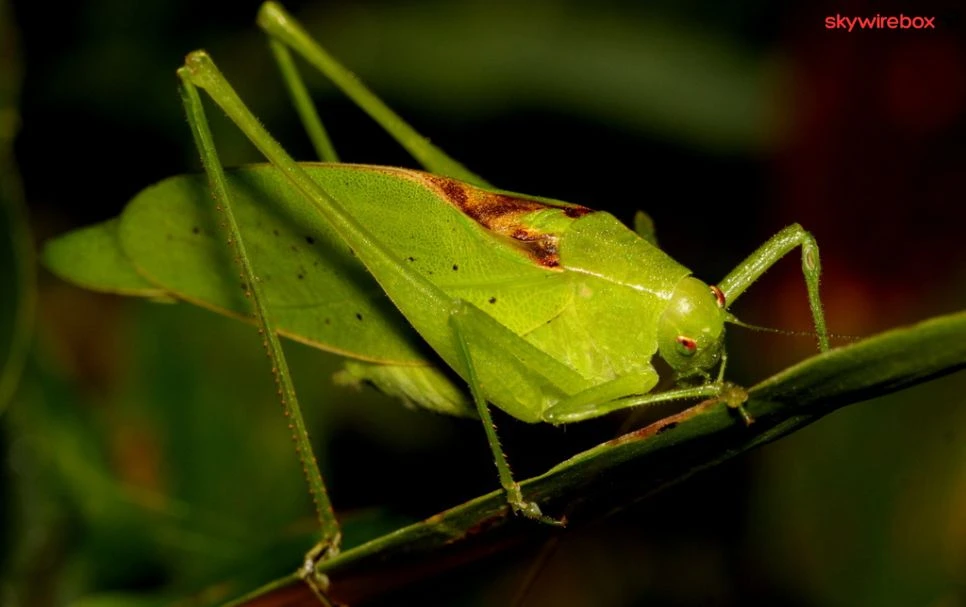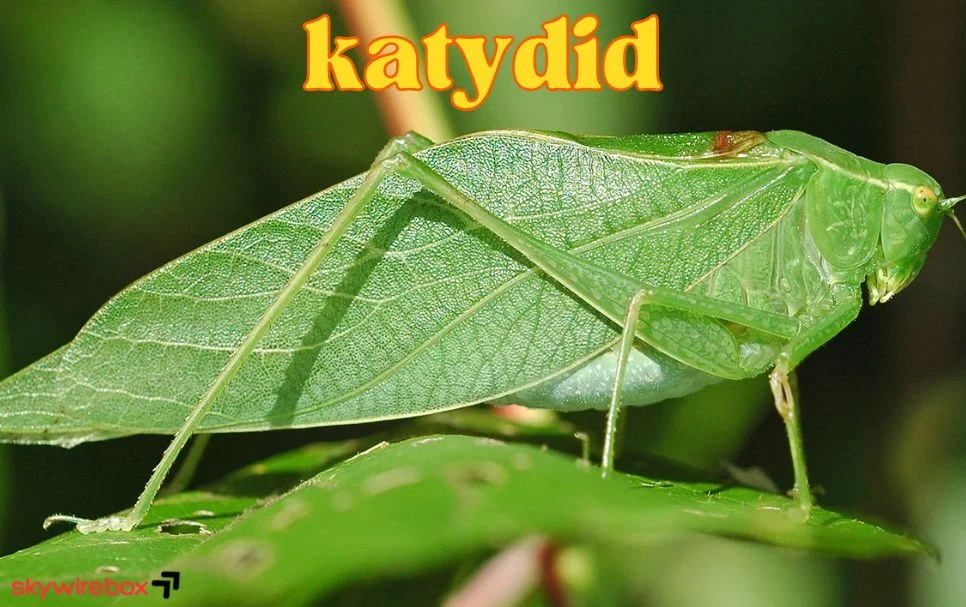Have you ever heard a soft, rhythmic rustling in the trees on a warm summer night and wondered what creature was making that sound? Chances are, it was a katydid an insect that looks like a green leaf and sings nature’s own melody.
But katydids are more than just mysterious nighttime musicians. They play a unique role in our gardens and ecosystems, and understanding them can change how you see the natural world around you. Whether you’re curious about their habits, worried if they might harm your plants, or simply fascinated by their leaf-like camouflage, this article will give you clear and interesting answers.
Keep reading, and you’ll discover why katydids are some of the coolest, most intriguing insects you’ve probably never paid much attention to until now.
Katydid Characteristics
Katydids have long antennaethat are often longer than their bodies. Their wings are shaped like leaves, helping them blend into plants. This leaf-like camouflageprotects them from predators. Colors range from bright green to brown, matching their environment well.
Sizes vary widely. Some are as small as a fingernail, while others grow up to 5 inches long. Larger katydids tend to live in tropical areas, while smaller ones are found worldwide.
Katydid Species
Katydids include many common typesfound worldwide. They often have leaf-like wingsthat help them hide from predators. These insects are mostly green or brown, blending well with plants. They make chirping soundsto attract mates, especially at night.
Tropical katydids are usually larger and more colorful. Some are known to be aggressivewhen defending their territory. They live in warm forests and often feed on leaves and smaller insects.
Madagascar hosts some unique katydid speciesnot found elsewhere. These species have distinct shapesand sometimes unusual colors. They adapt well to the island’s special environment and add to its rich biodiversity.
Behavior And Habits
Katydidseat mostly leaves, flowers, and fruit. They use their strong jaws to chew plants. Some species also eat small insects. These insects feed mostly at night to avoid predators. Their eating helps control plant growth and insect populations.
Katydids make sounds by rubbing their wings together. These sounds help them find mates and warn others. Each species has a unique call, which sounds like a ticking or chirping noise. Males are the main singers during warm nights.
Most katydids are active at night. They hide during the day in leaves or grass. This behavior keeps them safe from birds and other predators. Nighttime activity allows them to feed and find mates quietly.
Habitat And Distribution
Katydids thrive in forests, grasslands, and gardens. They prefer places with lots of plants and treesto hide and feed. These insects like warm, humid areas but can live in many climates.
The global rangeof katydids covers most parts of the world. They are found in North and South America, Africa, Asia, and Australia. Different species adapt to various environments, from tropical to temperate zones.
In Austin, Texas, katydids are common during spring and summer. They live in backyards, parks, and natural areas with dense vegetation. Their green color helps them blend with leaves, making them hard to see.
Katydids And Humans
Katydids are mostly harmless to people. They do not carry diseases or poison. Sometimes, they may bite if scared, but it is not serious. Their bite feels like a small pinch.
Handling katydids gently is important. Avoid squeezing or hurting them. Use soft hands if you want to hold one. Keep them away from your face and eyes for safety.
| Role in Gardens and Agriculture | Details |
|---|---|
| Beneficial | Eat harmful insects, helping plants stay healthy. |
| Pests | Some species eat crops, causing damage to plants. |
| Overall Impact | Mostly helpful, rarely harmful to gardens. |
Identifying Katydids
Katydidshave long, leaf-like wings that help them blend into plants. Their bodies are usually green or brown, which makes them look like leaves. They have very long antennae, often longer than their body. Unlike crickets, katydids hold their wings flat over their backs, forming a shape like a roof.
To tell katydids apart from similar insects, check their sound. Katydids make a soft, repetitive clicking or chirping noise at night. Grasshoppers, for example, are louder and have shorter antennae. Katydids also move slowly and carefully, unlike fast-moving grasshoppers.
- Search near trees and bushes at dusk or night.
- Look for still, leaf-shaped wings that match the leaves.
- Listen for soft, rhythmic chirping sounds.
- Use a flashlight gently to avoid scaring them away.
Interesting Katydid Facts
Katydids have leaf-like wingsthat help them blend into plants. This camouflageprotects them from birds and other predators. Their long antennae help them sense their surroundings in the dark.
These insects make sounds by rubbing their wings together. This is called stridulation. Each species has a unique song to attract mates or warn others.
The giant katydidcan grow longer than 4 inches. It is one of the largest katydid species in the world. Some katydids can jump far distances to escape danger quickly.

Frequently Asked Questions
Are Katydid Bugs Harmful?
Katydids are generally harmless to humans and do not pose a threat. Their bites are mild and non-poisonous. Some species can damage crops but rarely cause serious harm. Katydids also benefit gardens by eating harmful insects. Handle them gently to avoid minor nips.
What Does A Katydid Turn Into?
A katydid does not turn into another insect. It remains a katydid throughout its life cycle, molting as it grows.
What Does It Mean If You See A Katydid?
Seeing a katydid symbolizes nature’s balance and good luck. These harmless insects indicate a healthy environment.
Am I Hearing Cicadas Or Katydids?
Cicadas produce loud, rhythmic buzzing sounds. Katydids create softer, repetitive clicking or ticking noises. Identify by sound pitch and pattern.
Conclusion
Katydids are fascinating insects with unique features and sounds. They play a helpful role in gardens by eating pests. Most katydids do not harm people and only bite if scared. Their green color helps them blend with leaves, making them hard to spot.
Watching katydids can teach us about nature’s small wonders. These insects remind us that even tiny creatures have important jobs. Keep an eye out for katydids on your next outdoor walk. They are a quiet part of the natural world worth appreciating.
Visit here for more information and all updates: skywirebox






